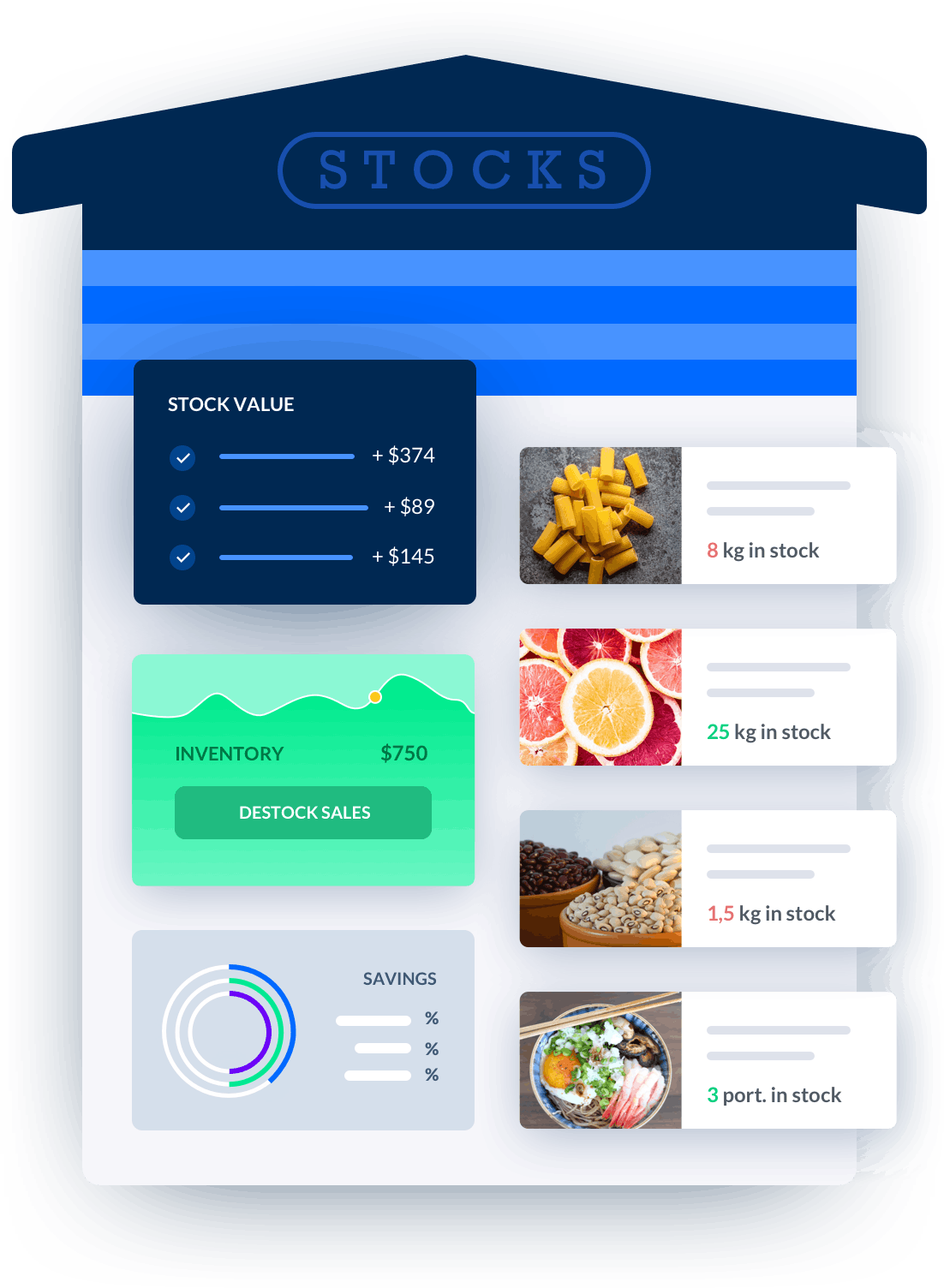food inventory categories
When it comes to managing food inventory, categorization is crucial for proper organization and efficient operations.By categorizing food inventory, professionals in the catering industry can easily track, manage, and plan their stock levels.

Melba: inventory management software
Discover how to optimize your inventory management with melba

Inventory management in catering, increase your cash flow
Good inventory management in food service helps to avoid waste, ensure that demand can be met, and avoid tying up cash. Find out how to optimize your inventory in this article!
When it comes to managing food inventory, categorization is crucial for proper organization and efficient operations. By categorizing food inventory, professionals in the catering industry can easily track, manage, and plan their stock levels. In this article, we will explore various food inventory categories that are commonly used in the industry.
1. Perishable and Non-Perishable Foods
One of the primary ways to categorize food inventory is based on perishability. Perishable foods are items that have a limited shelf life and can spoil quickly if not stored properly. Examples include fresh produce, dairy products, meats, and seafood. Non-perishable foods, on the other hand, have a longer shelf life and can be stored for an extended period without spoiling. This category includes items like canned goods, dried grains, pasta, and bottled sauces.
1.1 Perishable Foods Categories
Within the perishable foods category, there are several subcategories that can further assist in inventory management:
- Produce: This includes fruits, vegetables, herbs, and other fresh produce items. It is essential to categorize them separately to monitor freshness and prevent waste.
- Dairy and Eggs: Milk, cheese, yogurt, and eggs fall into this category. Proper categorization helps in monitoring expiration dates and maintaining quality.
- Meat and Poultry: Beef, chicken, pork, and other meat products should be categorized separately to ensure proper storage and rotation to avoid spoilage.
- Seafood: Fish, shellfish, and other seafood items are highly perishable. Categorizing them separately helps maintain their freshness and quality.
1.2 Non-Perishable Foods Categories
Similarly, non-perishable foods can be categorized into the following subcategories:
- Canned Goods: Canned vegetables, fruits, soups, and other preserved food items should be grouped together for easy inventory management.
- Dry Goods: This includes grains, pulses, flour, sugar, and other dry ingredients. Proper categorization ensures easy identification and minimizes the risk of spoilage.
- Bottled Sauces and Condiments: Ketchup, mayonnaise, salad dressings, and other bottled sauces can be categorized separately for better stock control.
2. Food Type Categories
Another way to categorize food inventory is based on the type of food. This classification helps professionals in the catering industry quickly identify and locate specific food items. Here are some common food type categories:
2.1 Protein Sources
Protein sources include meat, poultry, fish, tofu, and other plant-based protein options. Categorizing them separately allows for efficient planning of menu options and monitoring protein availability.
2.2 Carbohydrate Sources
Carbohydrate sources encompass grains, pasta, bread, potatoes, and other starchy foods. Proper categorization helps in managing portion sizes and ensuring an adequate supply of carbohydrates.
2.3 Dairy and Alternatives
This category includes dairy products like milk, cheese, and yogurt, as well as their plant-based alternatives such as almond milk and soy cheese. Categorizing them separately assists in monitoring inventory levels and accommodating dietary restrictions.
2.4 Fruits and Vegetables
Fruits and vegetables are essential components of a balanced diet. Categorizing them separately aids in menu planning, monitoring freshness, and minimizing waste.
3. Storage Location Categories
Organizing food inventory based on storage location can significantly improve efficiency in a catering setup. By categorizing items according to their storage requirements, professionals can easily locate and access the required ingredients. Here are some common storage location categories:
3.1 Dry Storage
Dry storage refers to areas where non-perishable items are stored, such as pantry shelves or cabinets. Categorizing items in this category ensures easy access and prevents confusion with perishable items.
3.2 Cold Storage
Cold storage includes refrigerators and walk-in coolers where perishable foods are stored. Categorizing items based on temperature requirements helps maintain food safety and prevents cross-contamination.
3.3 Freezer Storage
Freezer storage is specifically for items that need to be kept frozen, such as frozen meats, vegetables, and prepared meals. Proper categorization prevents freezer burn and ensures efficient stock rotation.
Conclusion
In the catering industry, effective food inventory management is vital for successful operations. Categorizing food inventory based on perishability, food type, and storage location provides professionals with a structured approach to stock control, menu planning, and waste reduction. By implementing these categories, catering professionals can streamline their operations and ensure a seamless experience for their clients.






